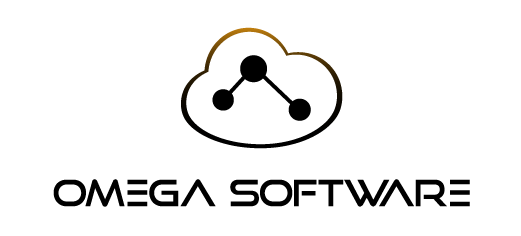For retailers, keeping the right products on the shelf at the right time can make or break a business. While stocking up may seem straightforward, accurately predicting demand is a more delicate process than it appears. That’s where inventory forecasting comes in—it’s the art of understanding your customers, anticipating trends, and fine-tuning stock levels to keep shelves full and customers happy. But what exactly is inventory forecasting, and how can retailers master it?
Let’s dig into some basics and practical techniques to help you better understand inventory forecasting and, ultimately, better serve your customers.
What Is Inventory Forecasting?
Think of inventory forecasting as a way to see into the future. By looking at past sales, market trends, and customer behaviors, retailers can make educated predictions about which products will be in demand and when. Not only does this prevent shelves from becoming a wasteland of unwanted items, but it also helps avoid those dreaded “out of stock” situations for popular products.
Why is Inventory Forecasting So Important?
At its core, inventory forecasting is about making sure your business is always ready to meet customer demand, without overextending resources.
Here’s how it helps:
• Reduces Excess Inventory: Prevents your capital from getting tied up in unsold stock, saving you from the need to slash prices just to make room.
• Improves Cash Flow: Optimizes purchasing, helping you invest in stock that truly moves.
• Avoids Stockouts: Ensures your customers don’t walk out empty-handed when they want a specific item, which keeps them coming back.
Common Inventory Forecasting Techniques
No two retail businesses are the same, and there’s no one-size-fits-all method to forecasting. Here are a few of the most popular techniques that can help guide your stocking strategy:
1. Trend Analysis
With trend analysis, you’ll look at past sales to spot patterns. By understanding what’s consistently popular, or even gaining traction, you can confidently stock items that’ll likely continue to perform well.
o Perfect For: Predictable, steady products.
o Example: A pet store might see steady increases in demand for eco-friendly pet products and stock more accordingly.
2. Seasonality Forecasting
Many businesses have seasonal peaks—think holiday decorations in December or sunscreen in the summer. By forecasting seasonally, you’ll be better prepared for these spikes.
o Perfect For: Items with predictable, seasonal demand.
o Example: A sporting goods store might ramp up inventory for hiking gear in spring and summer.
3. Sales Velocity Forecasting
This method is all about the speed at which products move off the shelves. Fast-moving items often require higher stock levels, while slower movers can be ordered less frequently.
o Perfect For: Everyday items with quick turnover.
o Example: A convenience store might use sales velocity data to determine how often they need to reorder popular snacks or beverages.
4. Market Research and External Insights
Sometimes, understanding customer demand means going beyond internal data. Market research, economic indicators, or simply gathering feedback from customers can provide valuable insights.
o Perfect For: New products or fast-changing trends.
o Example: A bookstore might track industry trends to see which new genres or authors are gaining popularity.
5. Qualitative and Quantitative Mix
While data is key, getting input from sales teams or conducting customer surveys can add another layer of insight. Combining both approaches allows for a more nuanced forecast.
Steps to Implement Effective Inventory Forecasting
Getting started with inventory forecasting doesn’t require high-tech tools right away. Here’s a quick roadmap to build the foundation:
1. Collect Data: Start with the basics. Use past sales records, customer feedback, and any other available insights.
2. Choose Your Forecasting Method: Pick a method (or a few) that best fit your business needs, whether it’s seasonal forecasting or trend analysis.
3. Set Forecasting Timelines: Decide how far ahead you want to predict. For faster-moving items, shorter timelines may work best, while seasonal items might need a longer-term approach.
4. Regularly Review and Adjust: No forecast is set in stone. Check your predictions against actual sales and make adjustments as you go.
5. Use Inventory Management Tools: Having a software solution can make a world of difference in tracking and managing inventory, helping you gain clearer insights into trends.
How Omega Software Can Support Your Inventory Forecasting?
Omega Software’s solutions go beyond just sales tracking. With a fully integrated POS and inventory management system, we make it easy to gather the data you need to forecast effectively. Here’s how Omega’s tools can give you the edge:
• Real-Time Sales Tracking: Omega’s POS system captures every sale instantly, providing you with up-to-the-minute insights.
• Automated Alerts: With real-time inventory tracking, you’ll never be surprised by low stock. Omega’s alerts help you stay ahead and ready.
• Customizable Forecasting Tools: Omega’s software offers tailored forecasting features that analyze historical data, helping you anticipate demand.
• Seamless Integration: Omega Software integrates with your POS and cloud-based systems to give you a full picture of your inventory across all locations.
Final Thoughts
At the end of the day, inventory forecasting is about giving customers what they want while maximizing your business’s profitability. By using the right forecasting techniques, setting up reliable systems, and staying adaptable, you can confidently meet demand without overstocking or running out of essentials.
And if you’re looking for a powerful partner to help streamline your inventory management and forecasting, Omega Software has you covered. Our comprehensive tools make it easy to track stock, analyze trends, and forecast accurately. Ready to see it in action? Get in touch with us to schedule a free demo and find out how Omega Software can elevate your business.

